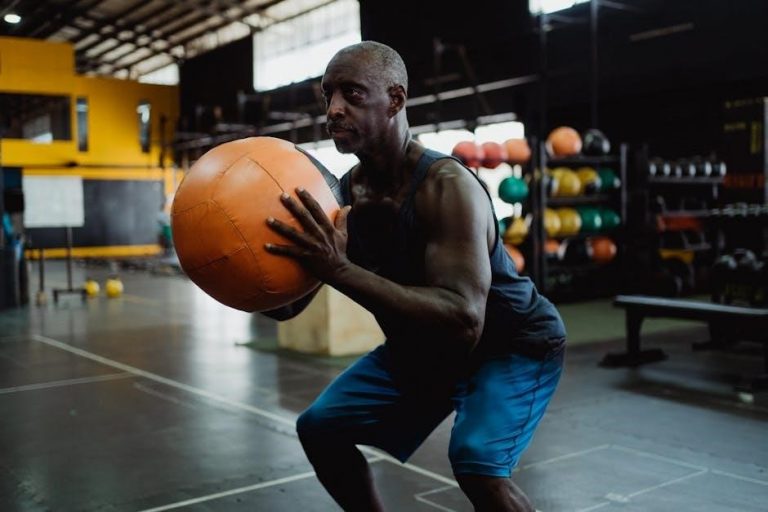Quad Strain⁚ Understanding the Injury
A quadriceps strain‚ often called a pulled quad‚ involves a tear in the quadriceps muscle group’s fibers. These powerful muscles extend the knee and flex the hip‚ making them prone to injury during activities like sprinting or jumping. The severity varies‚ impacting recovery time and treatment needs. Early diagnosis and appropriate management are key for optimal healing.
Causes and Mechanisms of Quadriceps Strain
Quadriceps strains arise from various mechanisms‚ often involving a sudden‚ forceful contraction or overstretching of the muscle fibers. These injuries frequently occur during athletic activities demanding rapid acceleration‚ deceleration‚ or changes in direction. Common scenarios include sprinting‚ jumping‚ and kicking‚ where the quadriceps muscles are forcefully engaged. Sudden‚ unexpected movements can also contribute to quad strains. The rectus femoris‚ one of the four quadriceps muscles‚ is particularly vulnerable due to its involvement in both hip flexion and knee extension‚ making it susceptible to strain across two joints. Overuse‚ muscle imbalances‚ inadequate warm-up‚ and muscle fatigue can increase the risk of injury. Understanding these factors aids in developing appropriate prevention strategies.
Grading Quadriceps Strains⁚ Severity and Treatment Implications
Quadriceps strains are classified into three grades based on the extent of muscle fiber damage. Grade 1 strains involve minor tearing with minimal loss of function‚ characterized by mild pain and tenderness. Grade 2 strains indicate a more significant tear‚ causing moderate pain‚ noticeable weakness‚ and some functional impairment. Grade 3 strains represent a complete muscle rupture‚ resulting in severe pain‚ significant weakness‚ and substantial loss of function. Treatment approaches vary depending on the grade. Grade 1 strains often respond well to conservative measures like rest‚ ice‚ compression‚ and elevation (RICE)‚ along with early range-of-motion exercises. Grade 2 strains might require more prolonged rest and rehabilitation‚ incorporating progressive strengthening exercises. Grade 3 strains may necessitate surgical intervention in severe cases‚ followed by a comprehensive rehabilitation program to restore muscle function and prevent re-injury. Accurate grading guides treatment decisions and influences the prognosis for recovery.
Quad Strain Rehab⁚ Initial Stages
The initial phase focuses on controlling pain and inflammation. The RICE protocol (Rest‚ Ice‚ Compression‚ Elevation) is crucial. Gentle range-of-motion exercises are introduced to maintain joint mobility and prevent stiffness‚ promoting early healing and recovery.
RICE Protocol⁚ Rest‚ Ice‚ Compression‚ Elevation
The RICE protocol forms the cornerstone of initial quad strain management. Rest is paramount; avoid activities that aggravate the injury. Ice application (15-20 minutes at a time‚ several times daily) helps reduce pain and inflammation by constricting blood vessels and slowing nerve conduction. Remember to wrap the ice pack in a thin towel to prevent direct skin contact and potential frostbite. Compression‚ using an elastic bandage‚ minimizes swelling by limiting blood flow to the injured area. Ensure the bandage is snug but not constricting; it shouldn’t impede circulation. Finally‚ Elevation of the leg above the heart reduces swelling by promoting fluid drainage. Elevate the leg whenever possible‚ especially during rest periods. This combined approach significantly reduces pain and inflammation‚ preparing the quad for subsequent rehabilitation.
Early-Stage Exercises⁚ Gentle Movement and Range of Motion
Once the initial inflammation subsides (typically after 2-3 days)‚ initiating gentle range-of-motion exercises is crucial. These exercises focus on restoring normal movement without stressing the injured muscle fibers. Start with simple ankle pumps and knee flexion/extension exercises while lying down. Gradually increase the range of motion as tolerated; Avoid any exercises that cause pain. A helpful exercise is to slowly lift your leg straight up while lying on your back‚ holding for a few seconds‚ then slowly lowering. Repeat this several times‚ increasing repetitions as comfort allows. Another beneficial exercise involves gently contracting the quadriceps muscle‚ feeling the tension in the front of the thigh‚ holding the contraction briefly‚ and then relaxing. These early exercises prevent stiffness and promote blood flow‚ facilitating healing. Remember to listen to your body; stop if you experience any pain.
Quad Strain Rehab⁚ Progression and Strengthening
As pain subsides and range of motion improves‚ the rehabilitation program progresses to strengthening exercises. These exercises gradually increase the load on the quadriceps muscles‚ building strength and stability. The progression usually starts with isometric exercises‚ moving to isotonic exercises‚ and finally incorporating functional movements.
Progression from Isometrics to Isotonics
The transition from isometric to isotonic exercises marks a significant step in quadriceps rehabilitation. Isometric exercises‚ involving muscle contractions without movement‚ are initially employed to promote healing and reduce pain. They help improve muscle activation and reduce pain without stressing the injured fibers. Examples include quad sets‚ where you tighten the quadriceps muscle without moving your leg. These are excellent early-stage exercises for building foundational strength.
Once sufficient strength and pain reduction are achieved‚ the rehabilitation program progresses to isotonic exercises. Isotonic exercises involve muscle contractions with movement‚ gradually increasing the range of motion and resistance. These exercises can include simple straight leg raises‚ where you lift your leg while lying down‚ building strength without excessive stress. Further progression might incorporate exercises like wall squats or partial squats‚ progressively increasing the load and range of motion. The key is to listen to your body and avoid pain. The transition from isometric to isotonic exercises represents a crucial phase in regaining full quadriceps function after a strain. Careful progression ensures a smooth and effective recovery.
Strengthening Exercises⁚ Building Muscle Strength Gradually
As the rehabilitation process advances‚ incorporating strengthening exercises becomes crucial for restoring quadriceps muscle strength. These exercises must be introduced gradually‚ starting with low resistance and a limited range of motion to avoid re-injury. Examples include seated leg extensions‚ where you extend your leg against resistance‚ and leg presses‚ which allow for controlled strengthening of the quadriceps. These exercises can be performed using resistance bands or weight machines‚ gradually increasing the resistance as strength improves. Always maintain proper form to minimize the risk of strain.
Another effective exercise is the isometric quadriceps contraction. This involves tightening the quadriceps muscle without moving the leg‚ holding the contraction for several seconds. This helps build strength without putting stress on the joint. Progression involves increasing the duration of contractions and the number of repetitions. The goal is to gradually increase the load and intensity of strengthening exercises to build muscle mass and regain full functional strength. Remember to listen to your body and stop if you feel any pain‚ adjusting the intensity as needed. Regular monitoring and adjustments by a physical therapist or healthcare provider is essential for optimal progress.
Advanced Exercises⁚ Incorporating Functional Movements
Once sufficient strength and range of motion have been restored in the earlier stages of rehabilitation‚ the focus shifts to advanced exercises that mimic real-life activities. These functional exercises prepare the leg for the demands of daily life and sports. Examples include lunges‚ squats‚ and step-ups. Lunges challenge balance and coordination while strengthening the quadriceps‚ hamstrings‚ and glutes. Squats improve lower body strength and stability‚ crucial for activities like climbing stairs or getting up from a chair. Step-ups work on leg strength and power‚ mimicking actions involved in everyday movements.
The progression of these exercises involves gradually increasing the difficulty‚ perhaps by adding weight‚ increasing the range of motion‚ or performing them on unstable surfaces. For example‚ you might start with bodyweight lunges and progress to weighted lunges‚ or begin with simple step-ups and progress to plyometric step-ups. Always focus on proper form to prevent re-injury and maximize the benefits of the exercises. The transition to these advanced exercises should be guided by a healthcare professional‚ who can assess your progress and ensure that you’re ready for the increased demands. This phase is essential for a complete recovery and a safe return to your normal activity levels.
Quad Strain Rehab⁚ Return to Activity
A gradual return to activity is crucial after a quad strain. Full recovery involves regaining strength‚ range of motion‚ and pain-free movement. A physical therapist guides this process‚ ensuring a safe and effective transition back to sports or daily life.
Criteria for Return to Sport
Returning to sports after a quadriceps strain requires careful consideration and adherence to specific criteria. These criteria are designed to minimize the risk of re-injury and ensure a safe return to athletic activity. The athlete must demonstrate full restoration of strength and range of motion in the affected leg‚ achieving symmetry with the uninjured leg. Pain-free performance of sport-specific movements‚ such as running‚ jumping‚ and cutting‚ is essential. The athlete should also complete a functional assessment‚ which involves simulating game-like scenarios to assess their ability to perform under pressure without pain or instability. This comprehensive approach ensures a safe and successful return to the field of play‚ minimizing the risk of future injuries.
Furthermore‚ the athlete’s subjective experience is crucial. They must report the absence of pain during activity‚ indicating that the injury has fully healed and that the muscle has regained its normal functionality. A physical therapist plays a crucial role in evaluating these criteria and making the final decision on return to sport. Their expertise and assessment guarantee a safe and effective transition‚ avoiding premature participation that could result in re-injury or long-term complications. The decision is not only based on physical capabilities but also on the athlete’s confidence and readiness to resume their sports activities. This holistic approach ensures the athlete’s well-being and long-term athletic success.
Preventing Future Quad Strains
Preventing future quadriceps strains involves a multifaceted approach encompassing proactive measures and lifestyle adjustments. Prioritizing proper warm-up routines before any physical activity is crucial‚ preparing muscles for exertion and reducing the risk of sudden strain. Incorporating regular stretching exercises‚ focusing on flexibility and range of motion in the quadriceps and surrounding muscle groups‚ is equally important. This enhances muscle elasticity and reduces the likelihood of tears. Strengthening exercises should be a regular part of a fitness regimen‚ targeting the quadriceps and supporting muscles to enhance stability and power. These exercises should be progressively overloaded to improve muscle strength and resilience.
Furthermore‚ maintaining optimal body mechanics during physical activities is paramount‚ ensuring proper form and technique to minimize stress on the quadriceps. This includes paying attention to posture‚ stride length‚ and movement patterns. Adequate hydration and nutrition play a significant role in muscle health‚ supporting repair and reducing susceptibility to injury. Finally‚ allowing for sufficient rest and recovery between workouts is crucial‚ avoiding overtraining which can deplete muscle energy stores and increase the risk of strain. This comprehensive approach‚ combining proactive measures and mindful habits‚ significantly reduces the likelihood of future quadriceps injuries.



